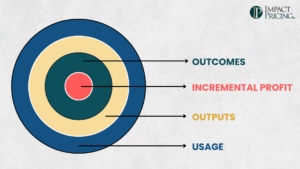I’ve always wondered why many prices end in 99 cents. This curiosity was so intense, it led me to complete an entire doctoral thesis about it. Why is this price ending so effective when it comes to selling?
Because we are lazy subtractors.
There are two major buying decisions: the “Will I?” decision, and the “Which One?” decision. Leaving aside the Will I decision for a moment, let’s talk about the Which One decision. This is when we compare two or more products. We ask ourselves, “Which one do we want to buy?” Imagine a scenario where you want to buy a new pair of shoes, and you’ve narrowed it down to two pairs. You prefer one of the pairs over the other, but of course, they are more expensive. The question is, are they worth the additional cost? This is where the subtraction happens. The only way to know the extra cost is to find the difference between the two prices, but we rarely do that. Instead, we estimate the difference, because … we are lazy subtractors.
We tend to compare two prices, focusing only on the left digit. If the left digits of each price are different, our brain doesn’t register the next numbers, and instead estimates the difference between the prices using these left digits. If they are the same, we move right one digit and compare those two, and so on.
An Example of Lazy Subtraction
Which difference is bigger?
Looking at the picture above, for subtraction A, people will start with the left-hand digits, 8 and 5. Since they are different, they will subtract the 5 from the 8, and get 3, and therefore estimate the difference between these prices as 30. In subtraction B, people compare the 7 and 5 (subtracting the latter from the former), and estimate the difference at 20. So most people believe the difference in A is larger than in B. (However, if you take your time and do the subtraction, you’ll find the difference in both examples is 25).
Thinking About it Differently
Now, if we change subtraction A a little, to something like this: $1.82 and $1.57, people will still tend to think about it the same way. They start with the left digit (1), realize they are the same, and then move to the next digit to the right.
So, how is this second example relevant?
Notice this behavior implies shoppers ignore the right-hand digits of prices. If customers ignore the right-hand digits, why wouldn’t we use the highest possible number on the right? This is why we see 99 cents so often, and why you might consider using it in your own business. Specifically, consider using 99 cents for any product where your customers will be comparing prices between your product and another (i.e., making a Which One decision), especially if you believe you are competing on price.
This is certainly not a hard and fast rule, but a good rule of thumb. In a future post, I’ll take you through why you’d want to use round pricing endings ($.00) for higher-priced offerings, and random price endings for custom products.
.99 or .95 in Price Endings
Now, when it comes to .99 vs. .95, I’ve never heard a valid reason for using 95 instead of 99. The most common reason given is they don’t want to look like they are pricing everything with 99. I’m not convinced this is valid, but I’m certainly open to looking at further research. In the meantime, I can’t help but think about a bike shop I worked with several years ago: they changed the prices of all of their tubes from $4.95 to $4.99 and reported making more than $100 additional profit on tubes alone due to that decision (2,500 tubes at an additional $.04).
The action you can take today.
Identify all the products you sell where your customers believe price is an important (or the most important) criteria for deciding between your product and a competitor’s product. What price endings are you using now? Try changing some of them to .99, and note how your customers respond and any change in sales.
















